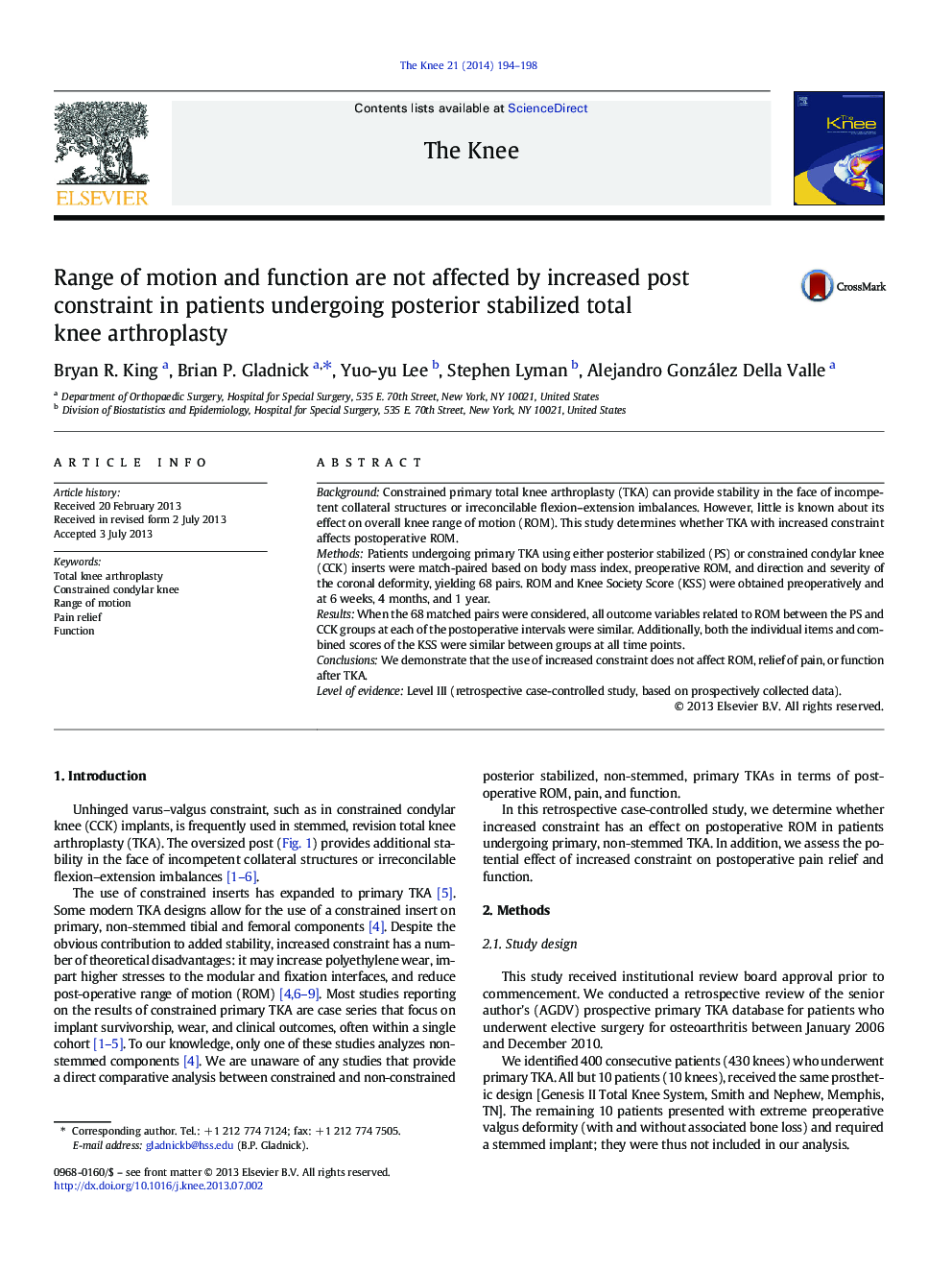| Article ID | Journal | Published Year | Pages | File Type |
|---|---|---|---|---|
| 6211250 | The Knee | 2014 | 5 Pages |
BackgroundConstrained primary total knee arthroplasty (TKA) can provide stability in the face of incompetent collateral structures or irreconcilable flexion-extension imbalances. However, little is known about its effect on overall knee range of motion (ROM). This study determines whether TKA with increased constraint affects postoperative ROM.MethodsPatients undergoing primary TKA using either posterior stabilized (PS) or constrained condylar knee (CCK) inserts were match-paired based on body mass index, preoperative ROM, and direction and severity of the coronal deformity, yielding 68 pairs. ROM and Knee Society Score (KSS) were obtained preoperatively and at 6Â weeks, 4Â months, and 1Â year.ResultsWhen the 68 matched pairs were considered, all outcome variables related to ROM between the PS and CCK groups at each of the postoperative intervals were similar. Additionally, both the individual items and combined scores of the KSS were similar between groups at all time points.ConclusionsWe demonstrate that the use of increased constraint does not affect ROM, relief of pain, or function after TKA.Level of evidenceLevel III (retrospective case-controlled study, based on prospectively collected data).
